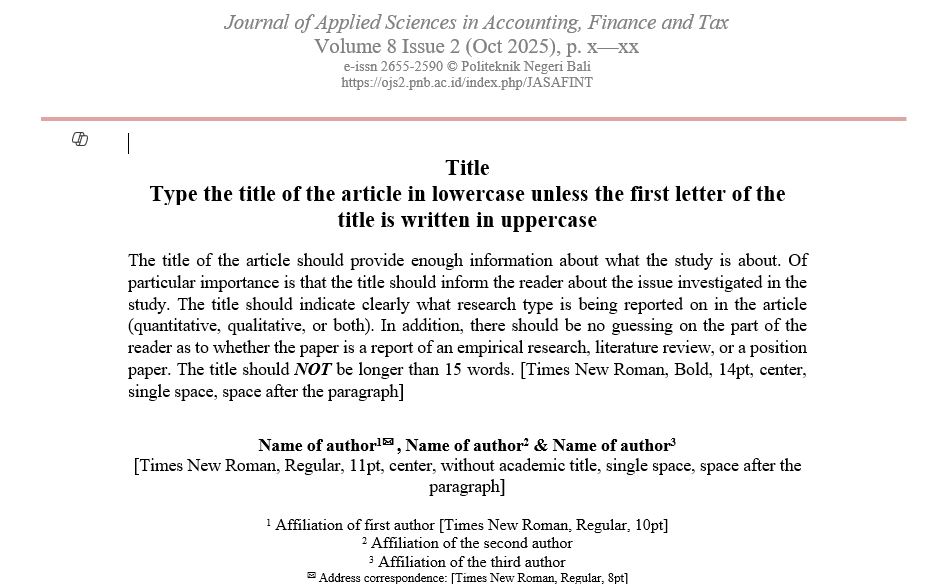The impact of tax information system on individual taxpayer compliance with Tri Hita Karana culture as moderating variable
DOI:
https://doi.org/10.31940/jasafint.v6i2.54-60Keywords:
tax information system, Tri Hita Karana culture, taxpayer’s complianceAbstract
The purpose of this study is to examine and quantify the impact of the Tri Hita Karana culture as a moderating variable on individual taxpayer compliance with the tax information system. In order to analyze secondary data, this research uses documentation and primary data obtained from the distribution of questionnaires to individual taxpayers who are enrolled at the Kantor Pelayanan Pajak Pratama Tabanan in order to get an Annual Notification Letter. Simple random sampling is used to determine the research sample using the probability sampling approach, yielding a sample of 100 distinct taxpayers. Using SmartPLS 3.3.9, the Partial Least Squares (PLS) approach is used in statistical testing to evaluate the hypothesis. The study's findings demonstrate that both the tax information system and Tri Hita Karana culture have a strong and positive impact on individual taxpayer compliance. This means that the more cultural values that guide the lives of individual taxpayers are embedded, the tendency is to increase taxpayer compliance. Additionally, Tri Hita Karana culture can act as a moderator by lessening the correlation between the two variables. Individual taxpayers do not realize that cultural values perceive important things in the use of a system, which can weaken the use of the system.







